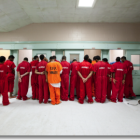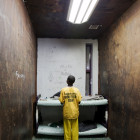
National Juvenile Justice Network Holds Roundtable on Reform Policies
|
The National Juvenile Justice Network (NJJN) recently published Advances in Juvenile Justice Reform: 2009-2011, a compendium of noteworthy reform measures enacted across 47 states and the District of Columbia. Tuesday, a quartet of NJJN representatives joined George Williams of Humane Exposures for a roundtable discussion of the new report, which was broadcast via a live Google Hangout feed. According to Williams, everybody lives in a state with juvenile justice problems. A resident of Louisiana, he said that his state has a higher incarceration rate than Iraq. “If we want public safety, we have to look at these issues in a different way,” said NJJN Director Sarah Bryer. She said that when state-based advocacy groups work together for reform policies, their combined efforts can serve as an “elevator for collective gain.”
Bryer said the information contained in the new compendium encompasses a “massive amount of data,” which allows organizations to analyze trends and policies enacted by agencies in other states.










